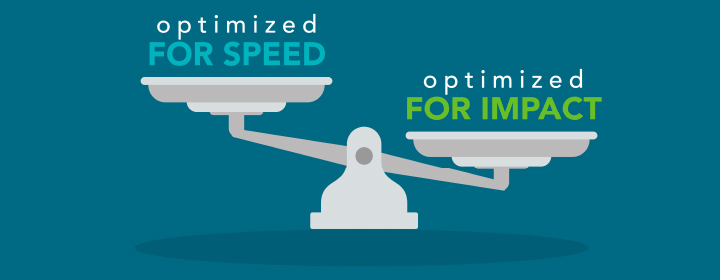As human services agencies look to 2021, the need to automate routine tasks to keep up with increased service demand won’t be slowing down anytime soon. This is especially true in economic assistance, where programs are already trying to handle an influx of applications while preparing for additional work to come whenever COVID-19 waivers expire.
Earlier this year, agencies quickly pivoted to adjust their paper and office-based processes to the new remote world. Now, with no definitive end to the pandemic in sight, it’s time to reevaluate if those tools continue to provide value. As GovTech.com states, “Technology decisions were made to meet the emerging demand and now need to be reviewed for their long-term viability.”
When we apply this lens to automation, one key question emerges: are the tools your agency has invested in solely speeding up work output or are they also taking some administrative burden off your staff so they can wholly focus on clients seeking support? A couple of examples:
- Consider an eligibility worker trying to serve a client who has deposited three different forms or documents in three different ways (think email, fax, and customer portal). Technology can pull everything into one funnel, such as a tool or workflow that automatically imports digital content from these various sources into the agency’s document management system. That way, instead of having to waste precious time tracking down information from multiple sources, the worker can focus on making sense of and using it to help someone get access to all benefits they need.
- Maybe you’ve applied technology to open access to services. But are workers still required to review every application to ensure it has been signed and all the right boxes have been checked? Do they then have to enter all that same data and information into the eligibility system? What about phone interviews? Do workers still have to read each application question by question and then manually enter in the data? Any of these situations should call into question the “efficiency” gains of the solution in place. It would be more beneficial here to leverage technology like intelligent document processing (or a similar form of robotic process automation) to handle the redundant and manual tasks that are draining workers’ time. That way, they can serve more customers—and do it better.

These examples demonstrate that automation has the biggest impact when it’s used to increase workers’ capacity for meaningful, client-focused activities. As you evaluate your tools and plans for the next year and beyond, keep the following best practices in mind:
- Solutions working together, not in silos. Cobbling together various tools and apps that don’t support or communicate with each other may ultimately cause more problems. Don’t just throw something new at the wall to see if it sticks. Understand how each piece of technology fits your overall strategy and will provide long-term value.
- Automate with a purpose. Automation is often viewed as a way to be more efficient, process more applications, and check boxes faster than before. That’s true but misses an important mark. Conversations should focus on how workers can use the time they get back to help every individual manage their way forward along the path to success.
- Don’t lose sight of the family’s story. Applications for assistance have become more transactional as agencies have moved away from in-person interviews and requirements. But an application on its own doesn’t tell the full story of how a family is doing and what other resources they need. When automation moves transactional processes to the background, workers can focus on understanding and supporting clients’ holistic needs.
By considering these best practices, automation becomes more than just a strategy for saving dollars or doing more work. Instead, it’s a meaningful way to give workers more time to dig deeper and go one step further to help clients on the journey to health and well-being.
∎